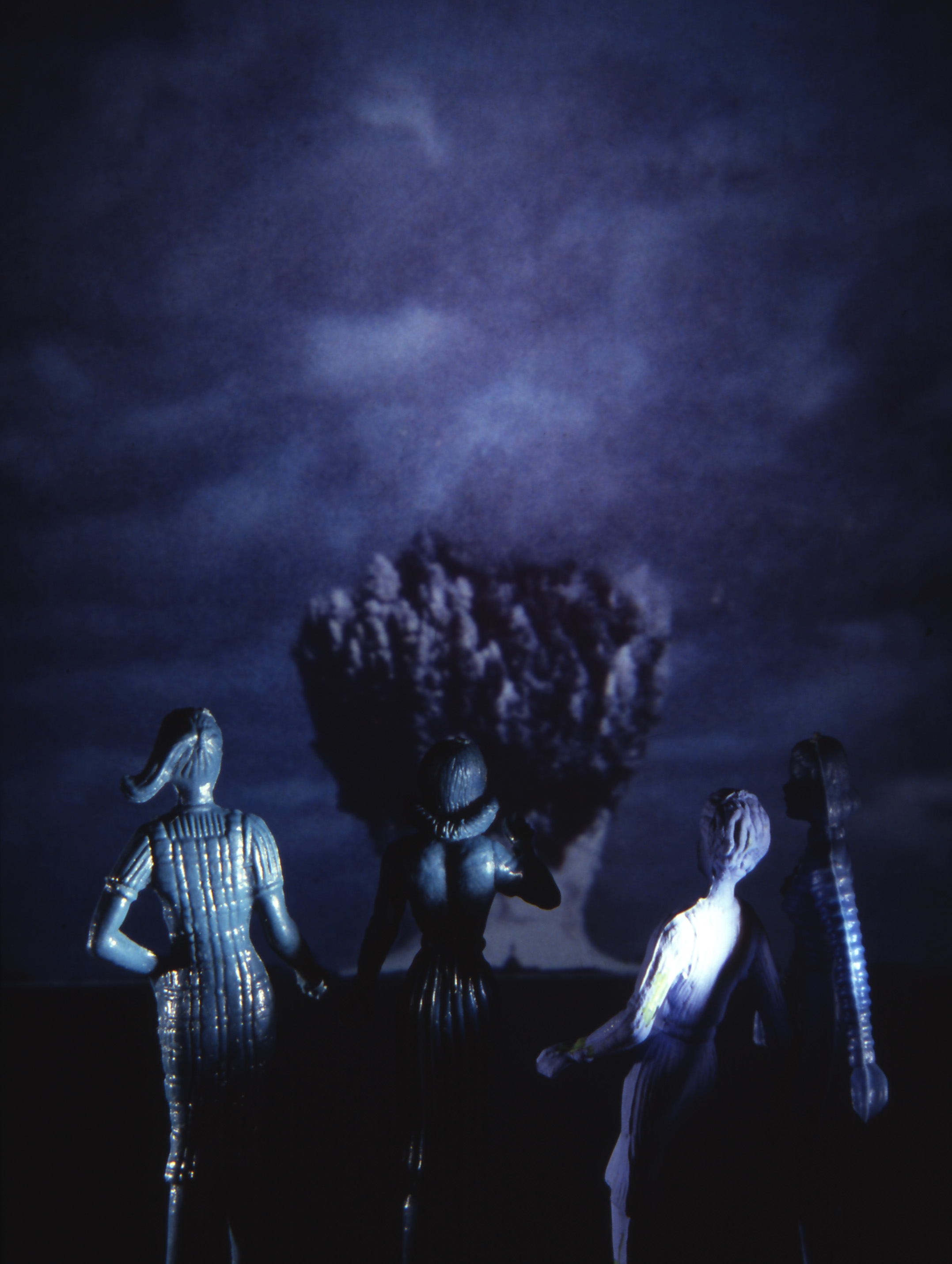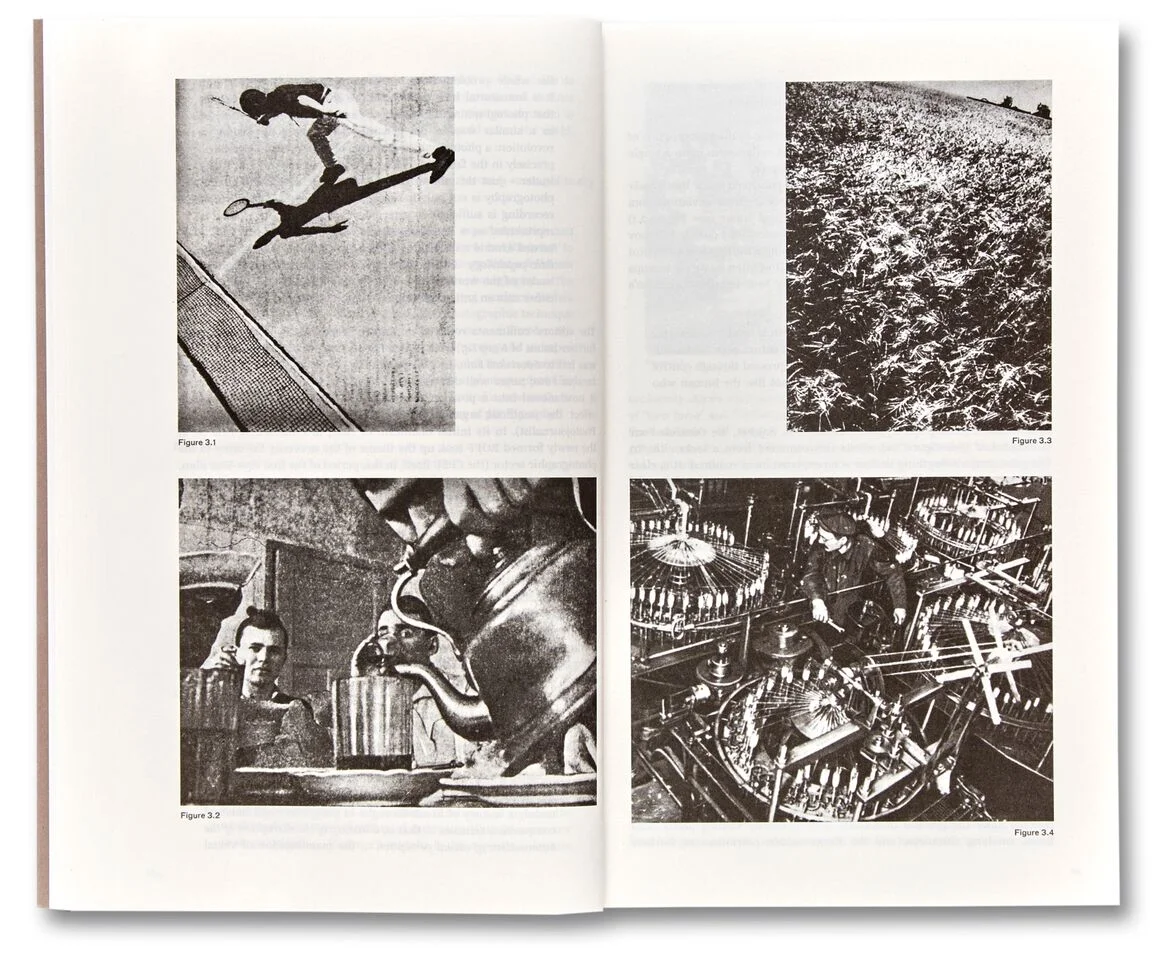Book Review: Laurie Simmons: Big Camera Little Camera
“Tourism: Bikini Atoll”, 1984. Cibachrome Print. Laurie Simmons. © Courtesy of Laurie Simmons
Since 1976, Laurie Simmons has been playing with dolls. She’s played with dolls, “action figures”, dummies, magazine cutouts, dioramas, human beings with painted doll eyes, and the occasional sex doll. Well, perhaps playing isn’t the best word for it; maybe one should say interrogating the constructions of gender and domesticity in American culture instead. Yeah, that sounds better.
“How We See/Edie (Green)”, 2015. Pigment Print. Laurie Simmons. © Courtesy of Laurie Simmons
Big Camera Little Camera contains a collection of over 40 years of Laurie Simmons’ work, showing her most famous works of art along with in-depth essays that discuss the meaning and significance behind them. Throughout the collection of photos, one can see the ways in which Simmons’ career developed as she plays with scale, staging, and the borders between reality and fiction.
“Magnum Opus I (the Bye-Bye)”, 1991. Gelatin Silver Print. Laurie Simmons. © Courtesy of Laurie Simmons
The phrase “life-like” doesn’t quite apply to the photos within Big Camera Little Camera, which isn’t to say that the figurines within the frame look like toys; actually, the expert use of staging, perspective, and lighting within each image renders the dolls unnervingly human. However, just like Simmons’ photos of human beings dressed up with painted doll eyes, something unsettling remains as Simmons plays with the boundaries between fiction and reality through the lens of toys.
“Some New: Grace (Orange)”, 2018. Pigment Print. Laurie Simmons. © Courtesy of Laurie Simmons
Simmons critique of gender roles is incredibly subtle; rather than resting her thoughts at the simple conclusion of “dolls reinforce models of what femininity and womanhood are onto girls”, her photography focuses on the weight of domestically charged products like lipstick upon the small figurines, the large vacant spaces within the fake houses, and the dolls left to sit and wait in those homes. Together, these motifs both render and criticize the gender roles that weight individuals down, leave them with a sense of emptiness, and take away their agency over their own existence.
“Pushing Lipstick (Full Profile)”, 1979. Cibachrome Print. Laurie Simmons. © Courtesy of Laurie Simmons
Rather than leaving her examination of gender norms within the boundaries of female-inscribed dolls, Simmons works to also deconstructs male gender roles through toys. In one section, Simmons poses rows and rows of cowboy dolls removed from their steeds. The resulting collage presents the figurines as ridiculously splayed out, unable to walk as they have been left in deformed postures symbolic of the particular form of masculinity these toys represent.
Not only does Big Camera Little Camera showcase the incredible images that have marked Simmons’ career, but the book also features in-depth and revealing interviews and essays on each project series contained within the book’s pages. These interviews are not only written with an incredible degree of wit and humor but also provide deep insight and context to all of her work, that incentivizes the reader to reread this collection so that they can glean something new from it each time.
“Jane”, 1976. Gelatin Silver Print. Laurie Simmons. © Courtesy of Laurie Simmons
Throughout her life, Laurie Simmons has magnified reality through her figures, pointing out the inconsistencies and problems of American gendered roles through the most unexamined parts of life. Big Camera Little Camera showcases and conveys the sheer amount of skill, perspective, and nuance that has made Laurie Simmons into such a known artist today.
Big Camera Little Camera is a work by Laurie Simmons, published by the Modern Art Museum of Fort Worth and DelMonico Books, is available now, and can be ordered here.
“Country Road: Kentucky”, 1984. Pigment Print. Laurie Simmons. © Courtesy of Laurie Simmons













